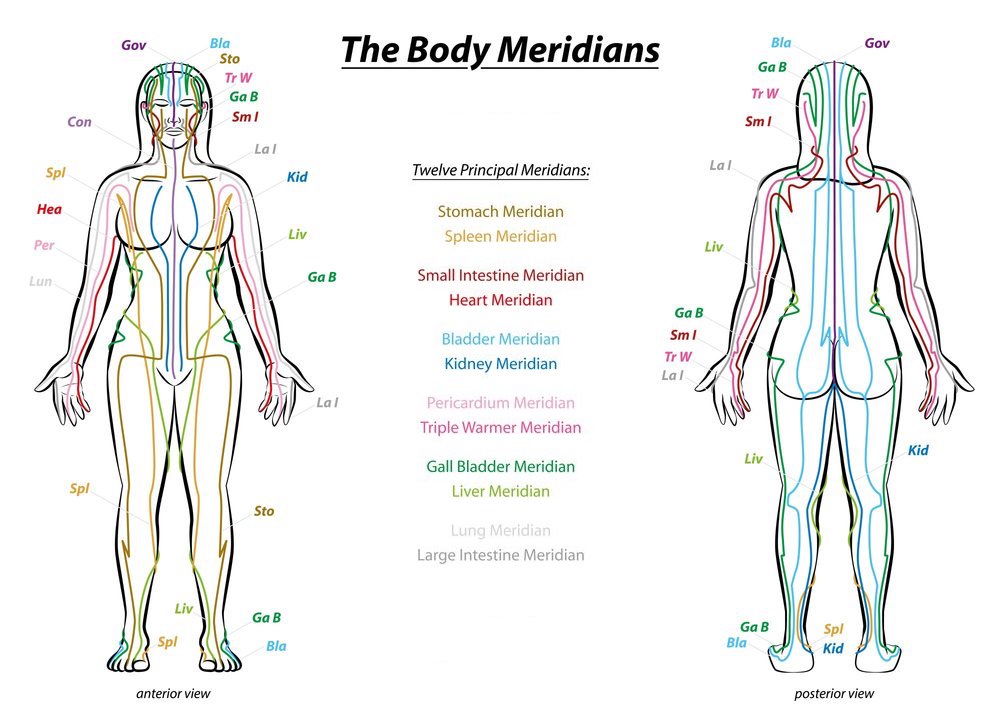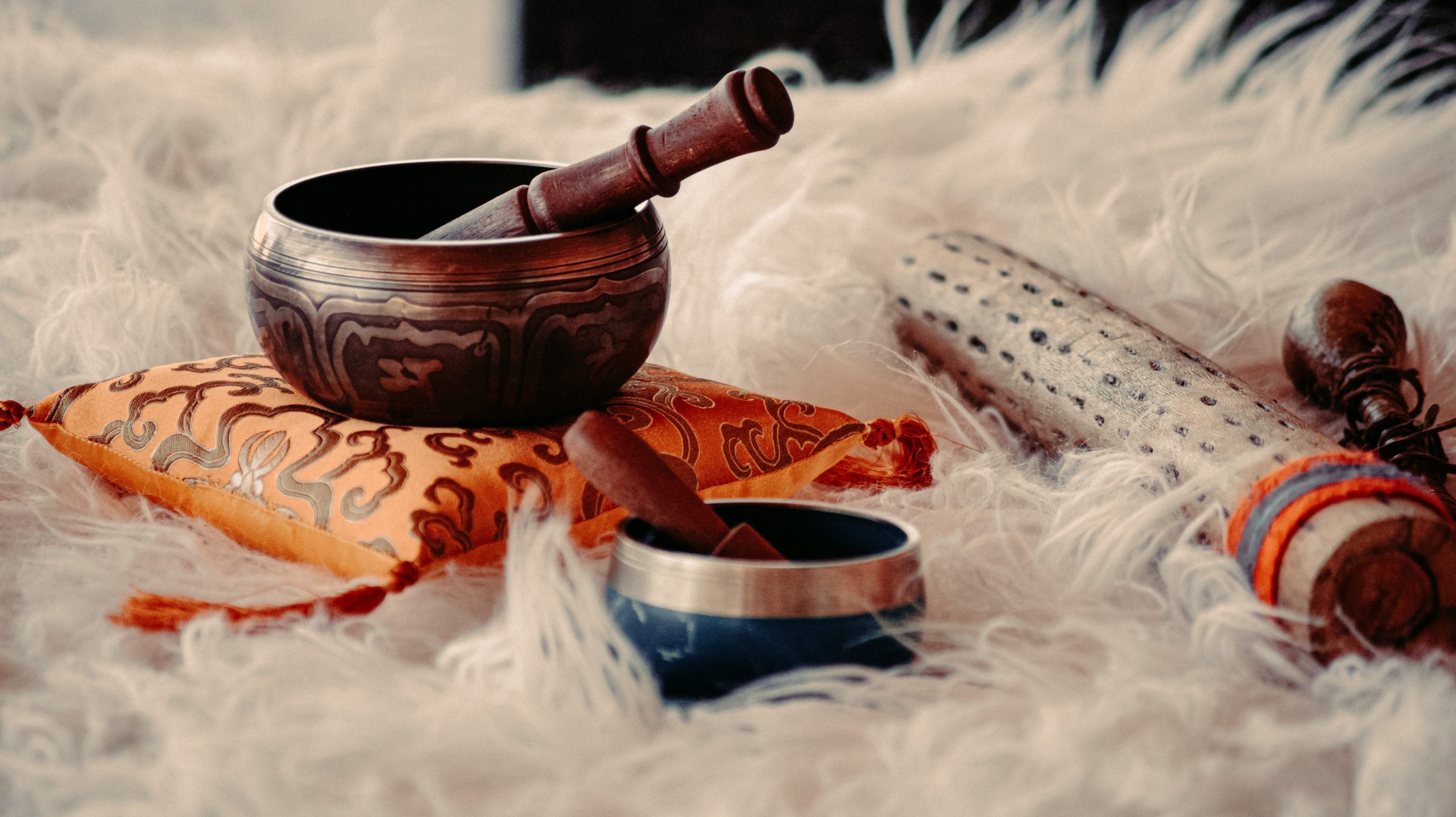Qi is the Key: Acupuncture and the 12 Meridians
One of the most renowned ancient healing therapies is that of acupuncture and the flow of Qi energy along the meridians of the body. The foundation of present-day acupuncture dates back to the Ming Dynasty (1368-1644) where The Great Compendium of Acupuncture and Moxibustion (1601) was the first medical treatise of Traditional Chinese Medicine (TCM) to note acupuncture as a healing method.2
Acupuncture didn’t gain awareness in the United States until centuries later after President Nixon learned about the practice during his visit to China in 1972. The modality was met with overwhelming skepticism by Western medical practitioners who suspected the healing benefit claims were conjured, inferior,3, or the result of a placebo effect.
Many years passed before acupuncture was accepted as medical therapy. It wasn’t until 1995 that acupuncture needles were categorized as medical instruments. In 1997, acupuncture needles were finally verified as healing utensils after being clinically proven to treat a wide range of maladies.4
Ancient Wisdom of Qi: The Three Energetic Levels
The theory of acupuncture accepts the idea that energy courses through the body in all areas. This energy, which is known as qi or chi (pronounced as “chee”), can be moved to a central point within the body to create health and balance while permitting the fulfillment of destiny. There are three energetic levels to qi. To properly understand acupuncture, it is necessary to have a grasp on Wei Qi, Ying Qi, and Yuan Qi.
- Wei Qi is known as the Defensive Qi. Wei Qi is often misunderstood because agreement as to the location of its origination in the body varies. Leading sources such as the Ling Shu and the Su Wen mention the formation of Wei Qi as being centered around the spleen, which is in charge of defending the body.5 If Wei Qi is performing properly, then it protects the body from external pathogenic factors, such as wind, heat, and other causes of disease. According to Ancient Wisdom Healing Arts, Wei Qi is instinctual, unconscious, and has no cognitive aspect, but it represents the ability to adapt while acclimating to climates, situations, and threats.
- Ying Qi, or Nutritive Qi, allows one to move forward and confront the day ahead. It also supports Wei Qi. Ying Qi supports progress by promoting survival, self-realizations, and the development of paradigms about life. Ying Qi is cognitive and can be learned.6 It is most active during sleep when the energy is being repaired and restored. Hence, resting is vital to its balance. Ying Qi strengthens the entire body and internal organs and is closely related to blood. Of note, Ying Qi is the qi that is stimulated when an acupuncture needle is applied to the body.7
- Yuan Qi, or Constitutional Qi, is a combination of your Ancestral Qi (hereditary) and Cosmic Qi (environmental, spiritual, karmic) that is present during your conception. It is pre-destined and fate-oriented.8 This makes Yuan Qi very different from the qi that one develops over time, such as Wei Qi and Ying Qi, but it does directly support Ying Qi, which is the manifestation of fate.
The 12 Meridians of Ancient Chinese Medicine
In TCM, the channels that connect key organs and regulate the flow of the fundamental substances throughout the body are called meridians (Jing Luo). Every organ is represented on the skin surface by a specific meridian. There are 12 principal meridians in the body that support unique aspects of the three qi types, always allowing motion between them:
- Stomach Meridian
- Spleen Meridian
- Small Intestine Meridian
- Heart Meridian
- Bladder Meridian
- Kidney Meridian
- Pericardium (Heart Governor) Meridian
- Triple Warmer Meridian
- Gallbladder Meridian
- Liver Meridian
- Lung Meridian
- Large Intestine Meridian

There are two types of organs: hollow (Yang) and solid (Yin).
Yang Organs
Hollow organs expand and contract, therefore they are considered more active (Yang). These include the stomach, bladder, gall bladder, small intestine, and large intestine. Yang organ meridians run downward along the back of the body and the outer side of arms and legs.
Yin Organs
Solid organs are considered more passive (Yin). These include the liver, spleen, lungs (a misconception is that lungs are hollow – they are not), kidneys, and the heart. Being solid, they do not contract as actively as the hollow organs. Yin organ meridians run upward along the front of the body and on the inner side of arms and legs.
It is important to note that meridians are non-physical and do not follow the precise paths of blood flow or nerves. Additionally, the meridians are mirrored on the entirety of the body, thus, the meridians on the left side will be the same for the right.
So Why Acupuncture?
There are over 350 acupoints (also called acupressure points, acupuncture points) along the meridian pathways which are specific locations where qi can be accessed. Acupuncturists stimulate these acupoints to help a patient achieve harmony, balance, and specific relief. This stimulation is often performed by using needles (acupuncture) or touch (acupressure).
The idea of being poked with lots of needles is not immediately appealing, but the acupuncture needle is known as the “painless needle” for a reason.9 They are customarily made of stainless steel, with sizes ranging from 26 to 40 gauge and lengths from 0.5 inches to 2.5. In conjunction with their thinness, acupuncture needles are less likely to cut the tissue compared to traditional needles.10
Acupuncture is most commonly used to treat pain and stress, discomfort from disease, conditions such as toothaches, tonsillitis, common colds, allergies, induction of labor, infertility, and more. Acupuncture can also boost the immune system by heightening Wei Qi. According to Midland Acupuncture, acupuncture can help improve digestion, revamp mood, boost energy, and promote relaxation.
If you are apprehensive about visiting an acupuncturist, you can first try DIY acupressure. Before you begin, we always advise consulting with your doctor or medical professional for guidance, as this article is not intended to provide medical treatment or advice. If cleared, prep by setting aside several minutes to find a comfortable position (laying down or sitting up) and relax.
DIY Acupressure
Here a few tips that may aid in your discomfort:
- Shoulder pain and headaches can be eased by putting firm pressure on the web of the thumb and forefinger. Hold for five seconds and repeat three more times. Please note that it is not recommended to use this pressure point if you are pregnant.
- To ease lower back pain, grab your waist with both hands so that your thumbs wrap around behind your back. Firmly apply a circular motion for five seconds. Repeat three times.
- If you are having trouble with sinus pain, use your index finger or thumb to apply pressure to the area between your eyebrows. Use circular motions for five seconds. While utilizing the same gesture, you can also try massaging both of your temples.
- Stomach aches can be relieved by a pressure point on your wrist. It is 2 inches above the wrist joint, located on the palm side between two tendons. Press this area and hold for 3 minutes.
Licensed Professionals Know Best
By utilizing the service of a licensed acupuncturist, you’ll be assured that sterile needles are used and properly disposed. Additionally, the professionals are extensively trained to provide you with care based upon your maladies and pain.
Just like picking out a doctor, you should thoroughly research acupuncturists around you to find the best fit. Interviewing professionals to assess their credentials is an effective way to find your desired acupuncturist. Or you can ask people you trust for recommendations. When deciding to move forward with a licensed professional, make sure the acupuncturist can answer all your questions and put any worries you might have at ease.
—
References:
https://www.amcollege.edu/blog/history-of-acupuncture [1] [2] [5]]
https://www.amcollege.edu/blog/acupuncture-in-west [4]
https://www.acupuncturetoday.com/mpacms/at/article.php?id=28164 [6]
https://ancientwisdomhealingarts.com/classical-chinese-medicine/ [7] [8]
https://www.sciencedirect.com/topics/nursing-and-health-professions/acupuncture-needle#:~:text=Commonly%20used%20acupuncture%20needles%20are,though%20it%20is%20very%20tiny. [9] [10]








